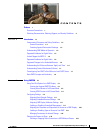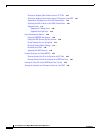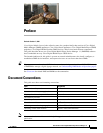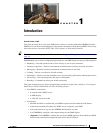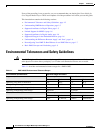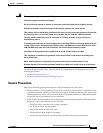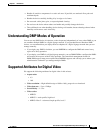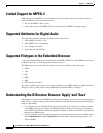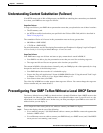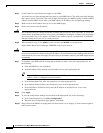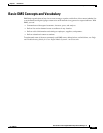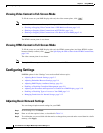
1-5
User Guide for Cisco Digital Media Player Device Manager 1.1
OL-13985-01
Chapter 1 Introduction
Understanding DMP Modes of Operation
• Handle all sensitive components in a static-safe area. If possible, use antistatic floor pads and
workbench pads.
• Handle the device carefully, holding it by its edges or its frame.
• Do not touch solder joints, pins, or exposed printed circuitry.
• Do not leave the device where others can handle and possibly damage the device.
• Take additional care when handling devices during cold weather, because heating reduces indoor
humidity and increases static electricity.
Understanding DMP Modes of Operation
You can use any DMP device in isolation, so that it operates independently of every other DMP, or you
can combine multiple DMPs in a digital signage network. If you purchased more than three DMP
devices, we recommend that you deploy them as endpoints in a digital signage network that you can
manage centrally.
• If you deploy any DMP in isolation, you use DMPDM to configure the DMP and control every
aspect of its daily operation.
• If you deploy your DMPs in a digital signage network, you use DMM-DSM to configure the DMPs
and control most aspects of their daily operation. The centralized management features in
DMM-DSM support many more options than DMPDM supports and can help you to reduce your
administrative overhead if you manage multiple DMPs.
Supported Attributes for Digital Video
We support the following attributes for digital video in this release.
• Aspect ratios
–
4:3
–
16:9
• Video resolution — High-definition (up to 1080 at 16:9), progressive or interlaced
• Video data rate — Up to 12 Mbps
• Overall delay — 1-3 sec
• Video codecs
–
MPEG-1
–
MPEG-2 —main profile, high level
–
MPEG-4 Part 2 —advanced simple profile, level 5



